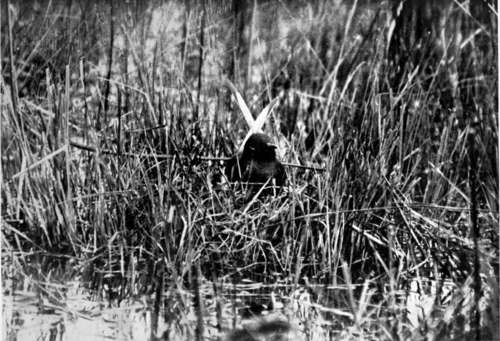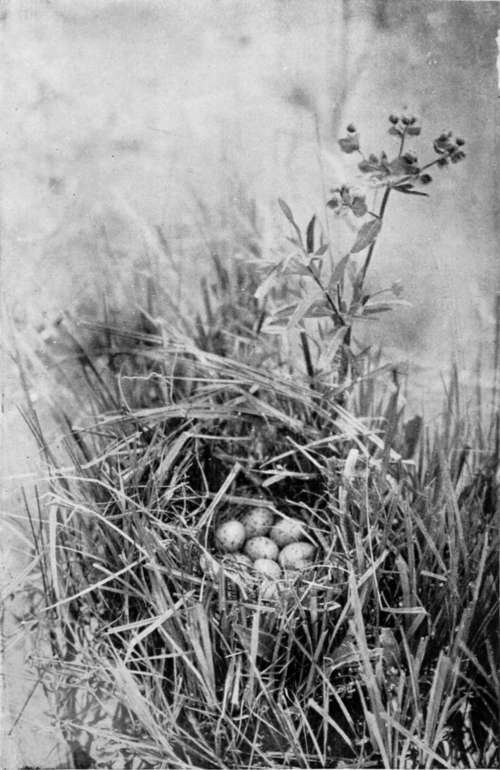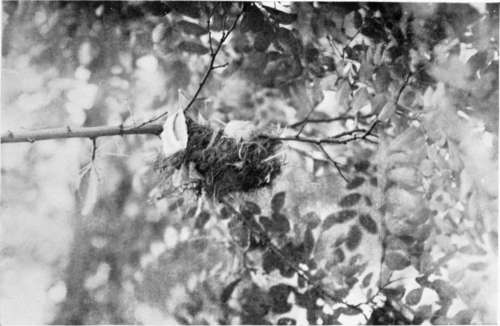Birds'-Nesting In Hungary. Part 4
Description
This section is from the book "Bird-Hunting Through Wild Europe", by R. B. Lodge. Also available from Amazon: Bird-Hunting Through Wild Europe.
Birds'-Nesting In Hungary. Part 4
Under Herr Cerva's guidance I visited a distant marsh where we found many birds nesting of great interest to me. It was an extraordinary place ; no stranger could have told that there was a marsh at all. It looked exactly like the surrounding country, being grown over with grass instead of the high reeds and water-plants generally found in marshy situations. Almost the first thing to be seen close to the roadside was a colony of Black Terns and the beautiful White-winged Black Terns (Hydro-chelidon leticopterd) apparently flying and hovering over a field. But to reach the nests it was necessary to wade knee-deep for some distance. The eggs of the latter species are generally somewhat greener in colour than those of the Black Tern, and, like them, boldly splashed with dark markings; but sometimes a clutch may be so like the allied species that it is necessary to identify the birds to enable one to be perfectly sure. It came on to rain heavily while I was fixing up the camera at the nest of a White-winged Black Tern, and though the bird came on twice in a short time I was somewhat doubtful about the results. However, fortunately they turned out better than I had expected.

White-Winged Black Tern (Hydrochelidon Leucoptera)

Nest Of Spotted Crake (Porzana Maruetta)
A little farther on. in a clump of grass surrounded by water, was a Spotted Crake (Porzana maruetta) sitting on thirteen eggs. The bird itself was caught on the nest, and proved to be the male ; and later we found another containing eleven eggs.
In another part, where the water was much deeper and the vegetation more marsh-like, was a nest of Water-rail (Rallies aquaticus) containing eight eggs, and one of the Little Crake (Porzana parva) with seven eggs. Big clutches seemed to be the fashion in this locality, as we afterwards took a nest of the Little Grebe containing the, to me, extraordinary number of seven eggs. On the drier ground was a solitary nest of Pratincole (Glareola pratincola) with three eggs.
In another direction, in a belt of small acacias, we found two nests of the Red-footed Falcon (Falco vespertinus), one of which contained young birds, and the other four eggs. In the same belt was the empty nest of a Lesser Grey Shrike, the owner of which anxiously watched our movements until we were at a safe distance.
Proceeding alone, under the guidance of a small boy who declared his knowledge of a Golden Oriole's nest, I was surprised to find it on a very small and slender acacia, at a height of about ten feet from the ground. So slender was this tree, that it could not support the weight of the boy, whom I sent up for the eggs, and I had to call him down again. I then cut down the tree with my knife, but after all, to my regret, the nest was empty. It was the first I had seen outside of a museum, and was a beautiful specimen of bird architecture. The hanging cradle, suspended between the fork of a branch, was supported by broad strips of flexible bark, and was composed to a great extent of pieces of white paper.
This was the last nest I saw in Hungary, for the lateness of the date (June 13) made it imperative for me to hurry on to Roumania before I lost the best of the season there. The fact was that my plan of campaign was much too comprehensive and ambitious. To work countries so far distant from one another as Montenegro, Albania, Hungary and Roumania in one season was a great mistake.

Nest Of Golden Oriole (Oriolus Galbula)
Arriving as a stranger in a new country, unable to speak the language, it is simply impossible to begin work at once. Sometimes weeks have to be spent in interviewing officials, obtaining permission and information, engaging guides, and overcoming unexpected obstacles of every description, before one can even commence operations. Then as soon as one begins to understand the ways of the people, and to find out where to go, and how to set to work, it is necessary to move on, leaving many things which are not quite ready, or which are too remote, so as to be in time for something else in a distant country where the same difficulties have to be gone through again de novo.
If a country is worth working at all, one whole season is none too long for anything like a good result, and for the photographic naturalist a season in Hungary ought to be very productive of good and interesting results.
Continue to:
